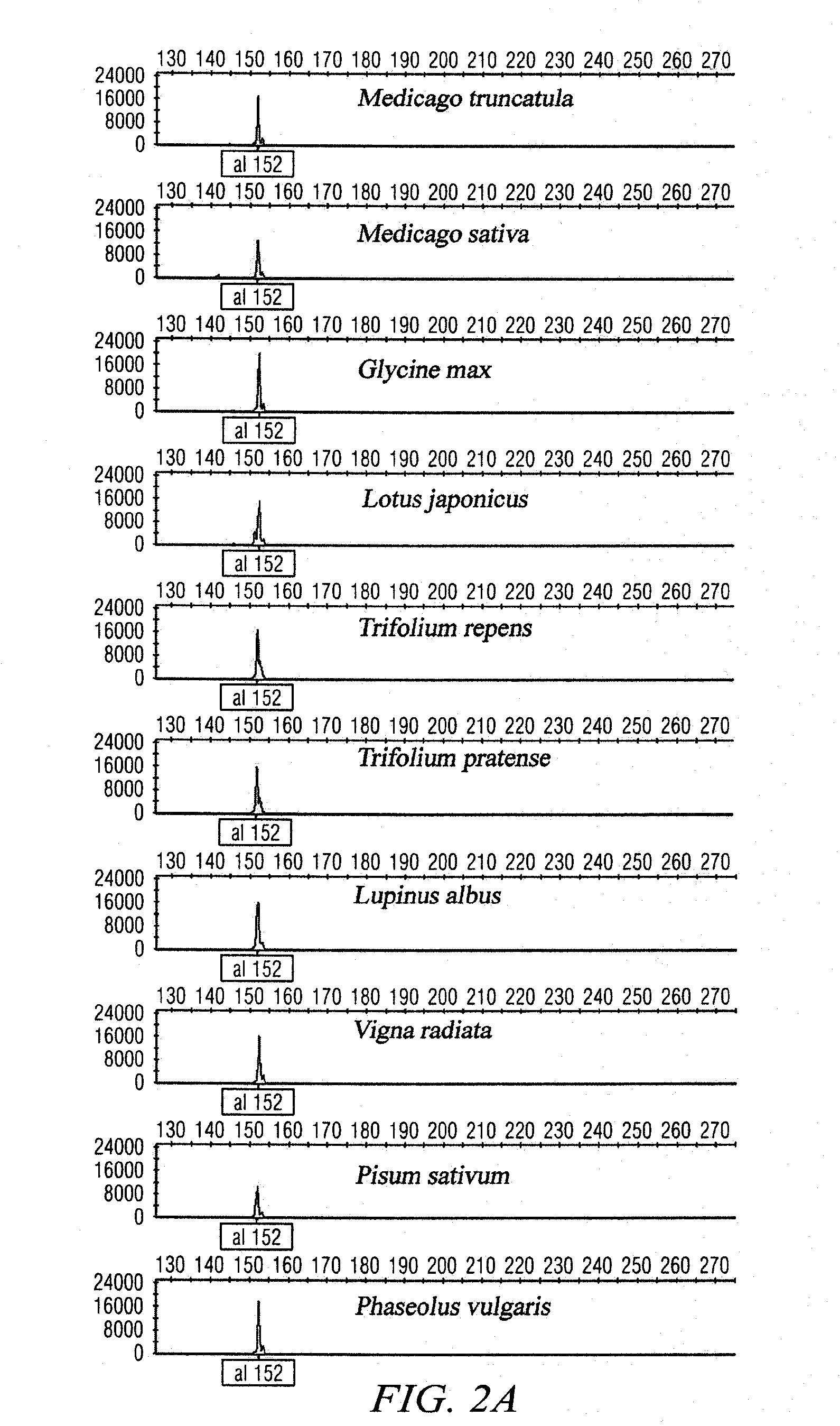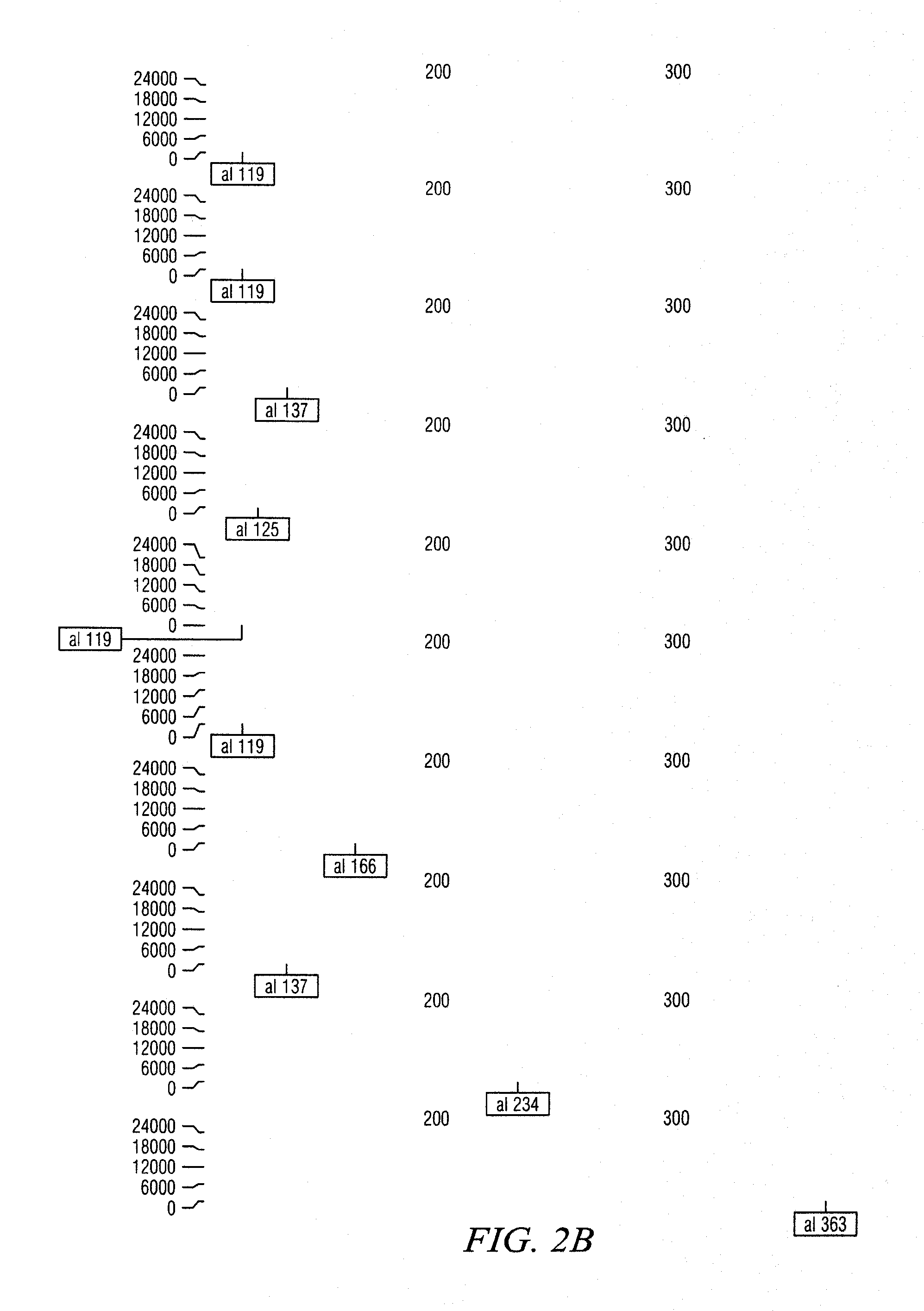Plant transcriptional factors as molecular markers
- Summary
- Abstract
- Description
- Claims
- Application Information
AI Technical Summary
Benefits of technology
Problems solved by technology
Method used
Image
Examples
example 1
Plant Material
[0042]Seeds from parents of legume mapping populations including M. truncatula, L. japonicus, G. max, L. albus, P. sativum, and P. vulgaris, were planted in the greenhouse (Table 3).
TABLE 3Entries from multiple legume species evaluated in this study.SpeciesCommon nameNumber of entriesMedicago truncatulaBarrel Medics8Medicago sativaAlfalfa8Glycine maxSoybean4Lotus japonicusLotus2Trifolium repensWhite Clover2Trifolium pratenseRed Clover2Lupinus albusLupin2Vigna radiataMung Bean2Pisum sativumPea2Phaseolus vulgarisCommon Bean2
[0043]Parents of alfalfa populations segregating for drought (Sledge and Jiang, 2005) and aluminum tolerance, and white clover (Zhang et al., 2007) mapping populations were propagated using cuttings. Young leaf tissue samples were collected, freeze dried, and DNA extracted and purified using the Plant DNeasy kit (Qiagen, Valencia, Calif.). Leaf samples from T. pratense were obtained from Heathcliffe Riday at USDA-ARS in Madison, Wis.
example 2
Primers and PCR Reactions
[0044]Two different but complementary approaches are used for primer design. In the first approach, a total of 1084 primer pairs were previously designed and validated to amplify M. truncatula transcription factor sequences (Kakar et al 2008). Medicago TF's were identified by screening 40,000 proteins of IMGAG (International Medicago Genome Annotation Group) release 1 for known or presumed DNA-binding domains using InterPro (www.ebi.ac.uk / interpro). Genomic sequences with DNA-binding domains were used to query NCBI's non-redundant DNA database (www.ncbi.nlm.nih.gov / blast) and the curated protein database UniProt (www.uniprot.org) rather than ESTs for TF gene discovery because those protein sequences are more complete and the set of IMGAG proteins essentially contains no redundancy. The process for developing molecular markers included PCR primer design and testing for gene specificity and amplification efficiency. The M. truncatula genome sequence from IMGAG...
example 3
SNP Discovery
[0047]PCR reactions producing simple amplification products will be sequenced using the BigDye® terminator v3.1 cycle sequencing kit and an ABI3730 genetic analyzer to confirm amplification of the target sequence and to identify potential SNPs among and within legume species. DNA sequence alignments may be produced with Sequencher™ 4.8, or similar, to survey the parental amplicons for polymorphic sites. PolyBayes, a program primarily designed as a tool for SNP discovery through the analysis of base-wise multiple alignments of clustered DNA sequences (Marth et al., 1999), and methods previously described (e.g. Altshuler et al., 2000) may be used for SNP discovery.
PUM
| Property | Measurement | Unit |
|---|---|---|
| Volume | aaaaa | aaaaa |
| Volume | aaaaa | aaaaa |
| Volume | aaaaa | aaaaa |
Abstract
Description
Claims
Application Information
 Login to View More
Login to View More - R&D
- Intellectual Property
- Life Sciences
- Materials
- Tech Scout
- Unparalleled Data Quality
- Higher Quality Content
- 60% Fewer Hallucinations
Browse by: Latest US Patents, China's latest patents, Technical Efficacy Thesaurus, Application Domain, Technology Topic, Popular Technical Reports.
© 2025 PatSnap. All rights reserved.Legal|Privacy policy|Modern Slavery Act Transparency Statement|Sitemap|About US| Contact US: help@patsnap.com



